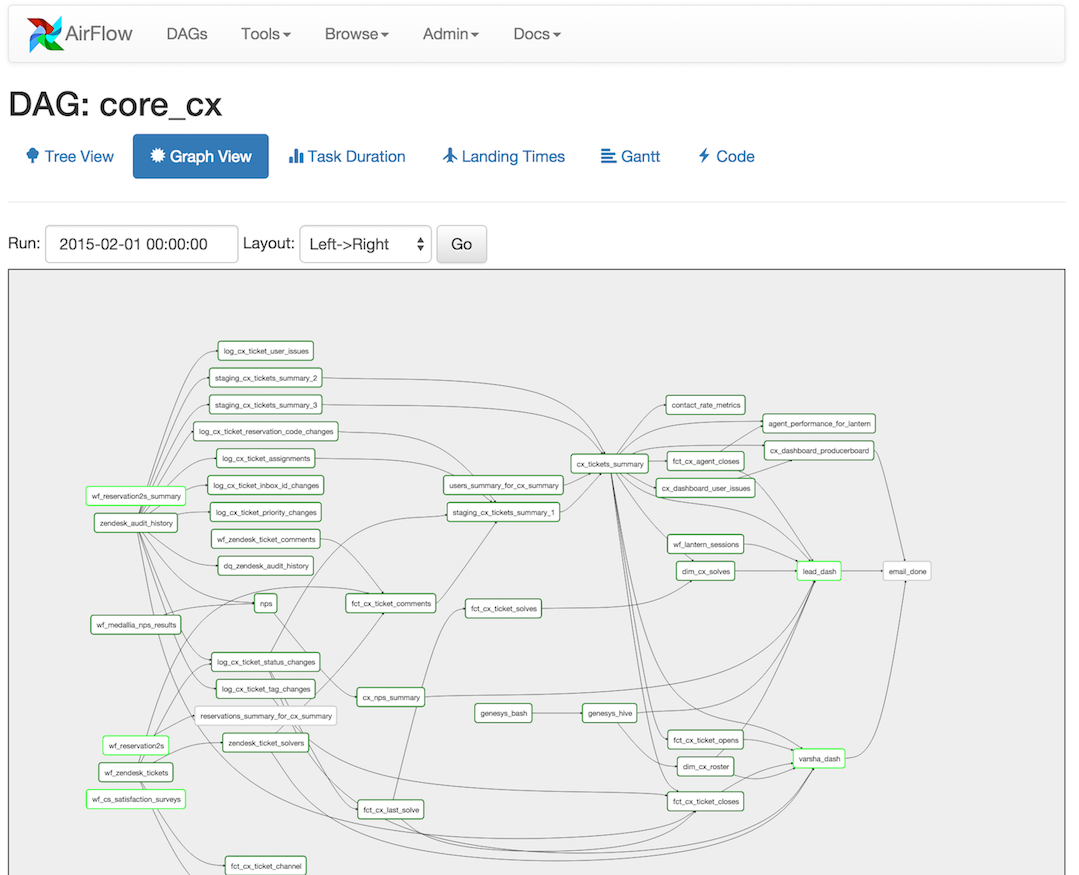

- AIRFLOW 2.0 TASK GROUPS HOW TO
- AIRFLOW 2.0 TASK GROUPS INSTALL
- AIRFLOW 2.0 TASK GROUPS FULL
- AIRFLOW 2.0 TASK GROUPS CODE
While Airflow 2.0+ offers greater flexibility and efficiency in managing data pipelines than ever before, your team still has to create them first. Using DAS42’s Framework Extends the Reach of Airflow Airflow 2.0’s TaskFlow API makes directed acyclic graphs (DAGs) significantly easier to write by abstracting the task and dependency management layer from users, while also giving developers a streamlined alternative to XComs for passing information between tasks.
AIRFLOW 2.0 TASK GROUPS CODE
The change allows for a separation of concerns, faster release cycles for specific components, and a much cleaner organizational structure of where you can find code related to the specific external system.
AIRFLOW 2.0 TASK GROUPS INSTALL
That means you can install Airflow for only the operator(s) you want. Contributed modules from the Airflow community have been restructured around the external systems that can be used with Airflow. Independent Providers for improved usability and a more agile release cadence.As a result, tasks like monitoring a job on an external system or watching for an event become far less expensive. With this feature, operators or sensors can postpone themselves until a light-weight async check succeeds, and one triggerer process can run hundreds of async deferred tasks concurrently. Deferrable Operators free up worker resources when waiting for external systems and events.
AIRFLOW 2.0 TASK GROUPS FULL
The new versions offer a full REST API to create, read, update, or delete DAG runs, variables, connections, or node pools. Airflow previously had only an experimental API with limited functionality.
AIRFLOW 2.0 TASK GROUPS HOW TO
In too many organizations, people spend as much time trying to figure out which key data figures are correct as they do strategizing about how to use the data to improve their business. At the center of the Airflow community and ecosystem, Astronomer is a steward of the Apache Airflow project and a driving force behind releases and the Airflow roadmap.Create a trusted, central source of truth. The upgrades include hundreds of new features, but the experts at Astronomer highlight some of the most significant. Over the past year, Airflow has gotten an upgrade, first with its 2.0 then its 2.1 versions, and, just this month, version 2.2. Say Hello to the Next Generation of Airflow By taking advantage of the right framework, you can automatically generate the complex processes you need and free your teams from being mired in hand-coding data pipelines. Airflow’s open-source technology allows you to describe and manage the tasks that make up your data pipelines with a clear user interface. Hand-coding them can quickly overwhelm any data engineering team. You may have thousands of data pipelines incorporating hundreds of parallel tasks.

They allow your team to code a series of tasks in order to extract, transform, and load your business data on a regular schedule.īut managing the pipelines themselves can be difficult. Your data pipelines are crucial for managing the processes connecting your data sources and analytical tools.


 0 kommentar(er)
0 kommentar(er)
